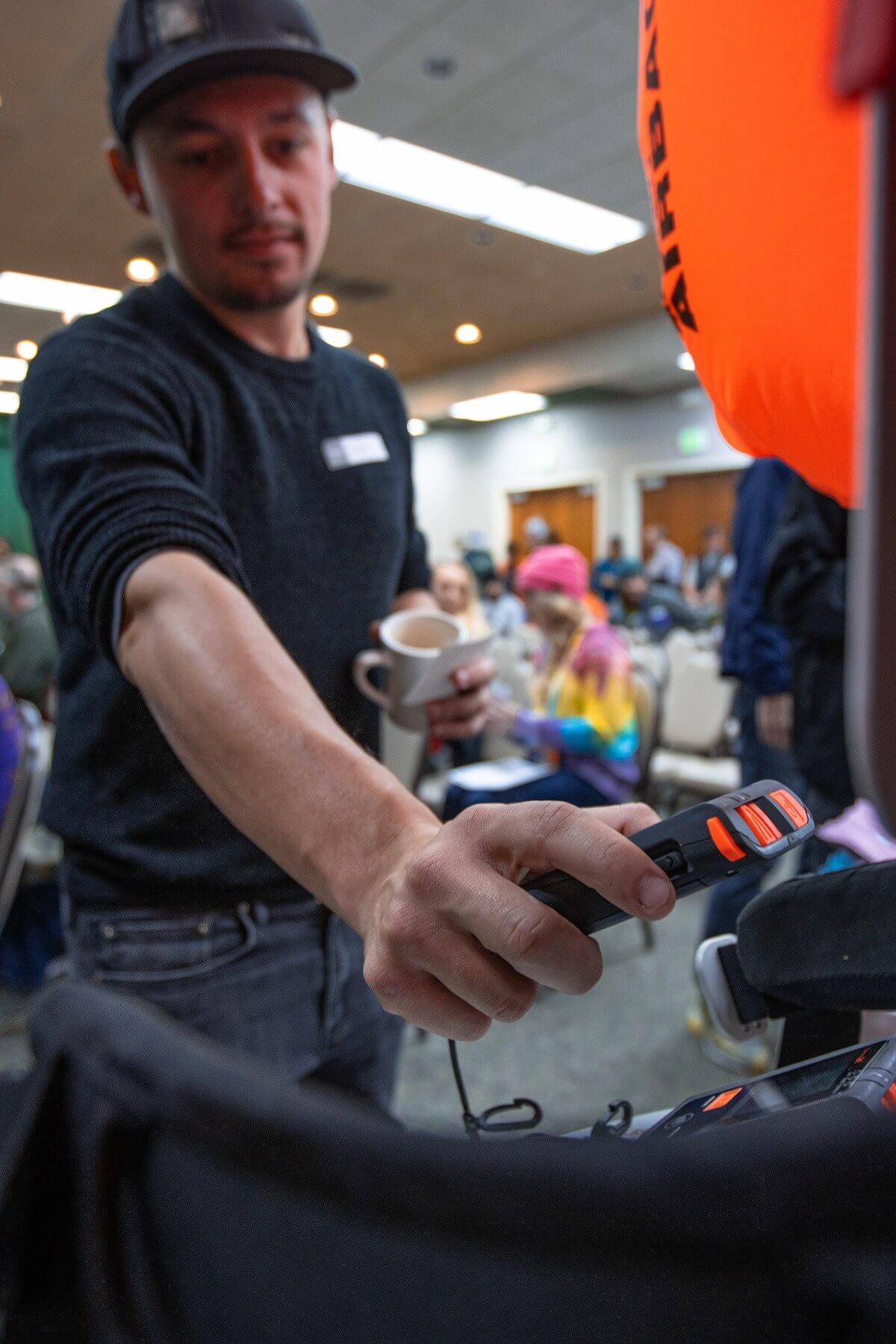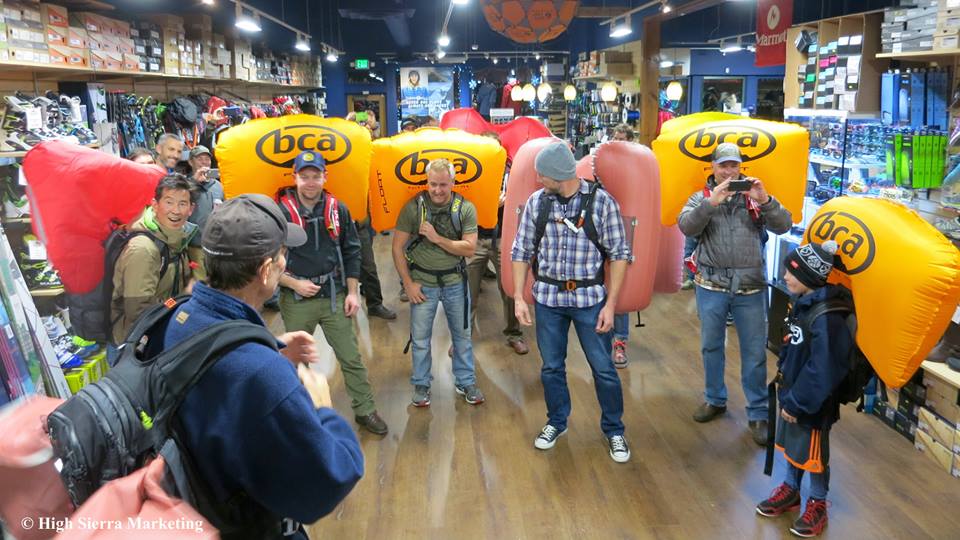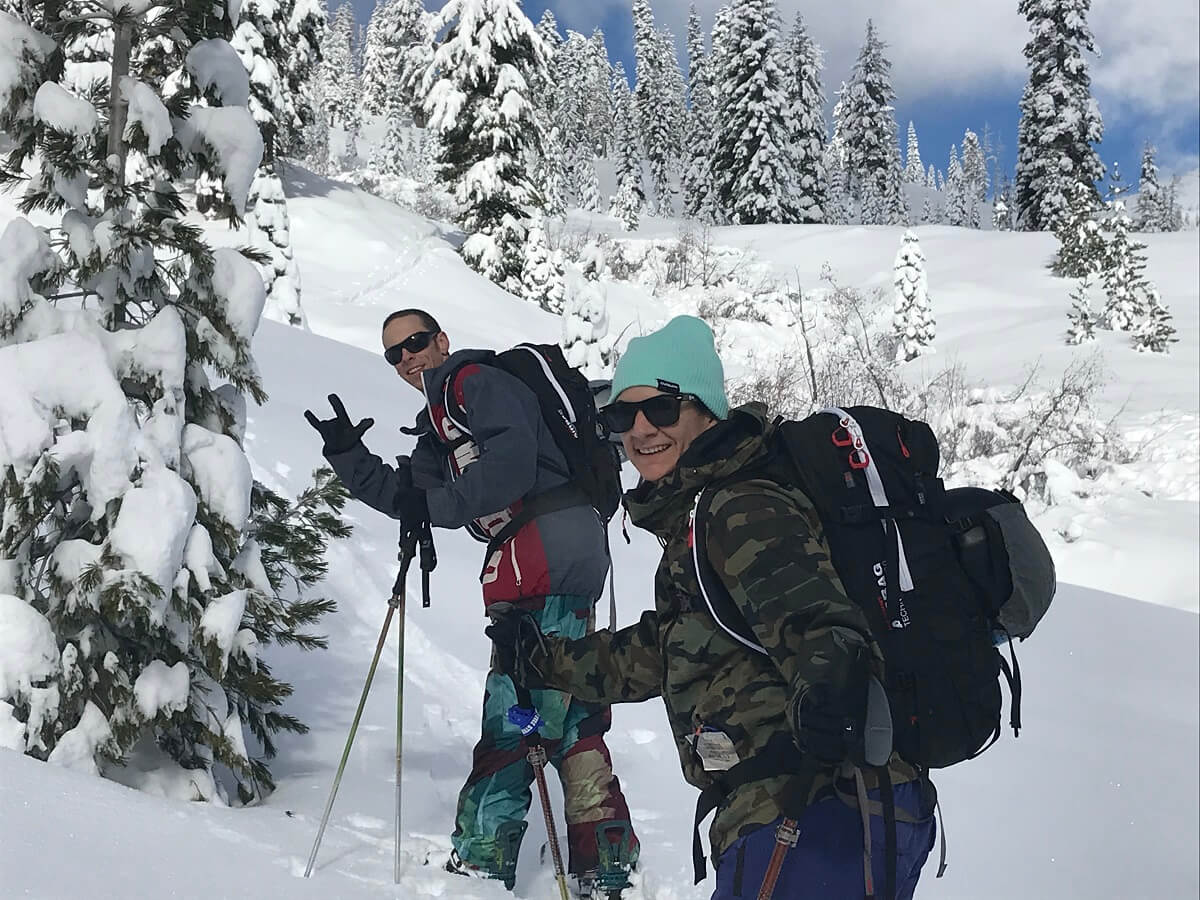A few years ago we had the opportunity to go to an Avalanche Education Series dedicated to what some think is the most important piece of safety equipment you can own – the avalanche bag. In this article, we provide a recap of the differences between the ABS companies and what they to offer. Although these are fairly new-ish to the scene in the U.S. & Canada, in Europe the avalanche bag has been around for more than three decades.
Brief Disclaimer About The Avalanche Pack

Before we go too much further, we do want to point out a couple things. In no way is this recap saying you should purchase one and suddenly you’re safe. It’s simply what it says, a recap of the differences. It was made clear that this is a tool to add to your safety kit. Also, there’s no substitute for knowledge. If you’re a beginner backcountry enthusiast or a well versed touring maniac we encourage each and everyone of you to take at least an AIARE Level 1 course. Simply put, avoiding an avalanche is the most effective way to stay safe. With that being, using a tool such as Caltopo to map out your route to avoid avalanche terrain on days you need to be more cautious is a better option. To learn more on how to use Caltopo as a tool, check out our article:
What Is An Avalanche Airbag?

Even with all the knowledge in the world, industry experts agree avalanches, whether at a ski area or in the backcountry, are an inherent risk in the sport. With this being the case, companies such as Ortovox, ABS, Black Diamond, Mammut and BCA have come out with what is called an avalanche airbag to reduce that risk. The technology is based on the physics phenomenon where larger objects rise to the top during an avalanche. A study conducted by the Swiss Federal Institute of Snow and Avalanche Research (SLF) found 97% of people caught in an avalanche with an avalanche bag survived. Most that didn’t survive were victims of blunt trauma and not asphyxiation from burial. If you’re involved in snowmobiling, snowshoeing, skiing, or snowboarding, we encourage you to do a little more research and consider adding this piece of equipment to your gear.
Ortovox Avalanche Airbag
What makes Ortovox unique is the avalanche airbag system can be removed. Once taken out, you’re left with a normal functioning pack for whatever you choose. You can pick from a number of different sizes depending on need. Emphasis is put on comfort and functionality. It operates based on the ABS system, which we will get into further below.
Black Diamond
When Black Diamond put out their version, the Jetforce Pack, it created a buzz in the backcountry community. Instead of using compressed gas, they use a battery operated fan. What makes this item so unique is the fan allows the avalanche bag to be deployed multiple times on a single charge. One thing to note: As with many electronic devices, there are individuals that say the fan can interfere with the signal of your avalanche beacon.
Mammut
Asphyxiation and trauma are the main cause of death when caught in an avalanche. Mammut took that into account when they designed their P.A.S. pack. This is a gas system deployed when a rip cord is pulled. The avalanche airbag inflates over your shoulders and behind your neck and head to protect your vitals when tumbling in the washing machine. These systems also come as removable. While a bit more expensive and not focused on fashion, this is our GO TO avalanche bag. We’ve owned their 35 LITER PRO REMOVABLE AIRBAG 3.0 AVALANCHE BACKPACK and loved it when we needed that extra safety. Here’s a video of us enjoying our backpacks during a spring session in the Lassen backcountry:
ARVA
For more than three decades ARVA was focused on designing and developing avalanche transceivers. Using this knowledge and studying hundreds of actual accident reports, ARVA came out with backpacks featuring their own ABS system, REACTOR. Compared to the other brands on the market the airbag itself is divided into two separate compartments. That means if one punctures during an avalanche the other half will inflate.
ABS
Last, but certainly not least, is ABS. The godfather of air bags. They were developed many years ago in Europe by German Peter Aschauer. Over the years, ABS has tested and tweaked their system to what it is today. It uses compressed nitrogen to deploy the avalanche airbag. They developed a two-bag system that when filled looks like two separate balloons stretching from the bottom of your head to the back of your thigh. The thinking behind this is that if one bag pops, you have another, while the length will keep more of the body on top of the snow and out of danger from trauma.
Other Things To Take Into Consideration
With the mechanics down, here’a a few other things you should consider when purchasing a backcountry backpack outside of the airbag.
Ski / Snowboard Carry Option That Fits Your Gear

If you’re going to be touring in the spring, there’s a good chance you’ll be hiking quite a ways to get to the snow. Of course, you can shoulder that equipment, but after a half hour, you’ll be groaning. The more options in your backpack, the better. At a minimum, make sure the carry system can handle your equipment. Most good backcountry ski bags have a combination of options such as:
- Diagonal ski carry
- A-frame carry (one ski vertically on each side with a strap joining them at the tips, forming an “A”)
- Vertical and/or horizontal snowboard carry options
Hydration
No matter if it’s a short jaunt or a full day extravaganza, water is crucial. Of course you can pack a water bottle, but you’re adding weight and being more inefficient. Look for a pack that has a hydration bladder sleeve inside. Since you’re going to be using it in the winter, it’s important to have an insulated, zippered channel in the shoulder strap to keep the hose out of the elements. This will make sure it doesn’t freeze up as quickly.
Size Of The Pack
This is a matter of preference and how conservative you are. For our normal full-day excursions, we like to have a bag that provides at least 30L of space. This gives us enough room for a fleece, water, food, snow/avy tools, a first aid kit, spare gloves, goggles, a space blanket, a few ski straps, and even some duct tape. In the end, it all comes down to what kind of touring you want to do. Resort backcountry? Alpine ascents? Day trips? Overnight hut trips? We have a few different backpacks to cover our spectrum of outdoor fun.
Weight & Comfort
Similar to a classic hiking backpack, weight is something to really consider. With that being said, what’s more important is one that can take a beating. Skis and splitboards have sharp edges. Shovel blades and tree branches can definitely do damage. In addition, you want an avalanche bag that fits tight so that it has a closer center of gravity. Compression straps help make it easier to ski as well as hike and skin.
With these principles in mind, not every avalanche bag will be right for you. Take the time to test how the pack feels fully loaded before you take it out touring. If you’re looking for more tips on what gear to get, where to get started on avalanche training, or just read about our personal experiences like having a friend break their leg in the mountains then be sure to explore our comprehensive backcountry homepage:

In closing, yes these are pricey. But let’s really think about it. How much do we spend on gear to get us out there and put ourselves at risk? Don’t you think we should spend an equal amount on safety? After all, how much is your life worth? For us, it’s a big and simple YES!









I used to own a ABS powderline and Vario pack, but their retailer network all but dried up making it hard and expensive. Tried the battery packs but they were way heavy and not that functional of pack. Based on the research I did and talking with some patroller freinds I ended up with a 24L Arva pack, not sure why you don’t mention or test them in your article, I have been pleasantly surprised with the weight and feel of my Reactor.
Hey Arnold,
Unfortunately when we did the research didn’t get a chance to try an Arva Pack. We’ll definitely take a closer look at this brand and update accordingly. Appreciate you taking the time to give us this feedback. 🙂